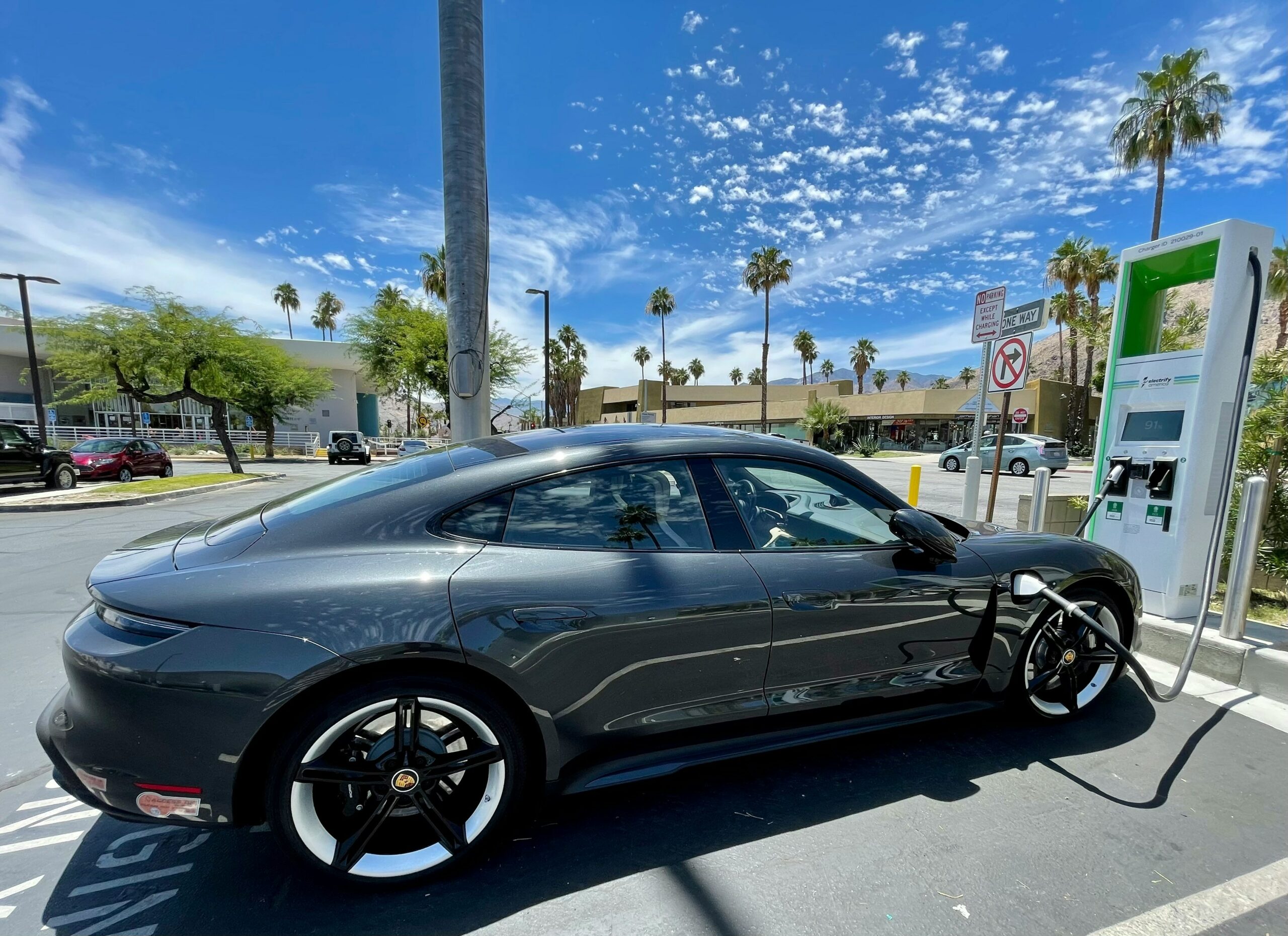Insider Brief:
- Climate tech investments have proven to be resilient.
- Energy- and transport-focused startups have garnered a majority of funding.
- Investors would do well to fund more early-stage startups, investment chief says.
Strong Growth in Climate Tech Investments
Investment in climate technology is expanding in leaps and bounds, and has been resilient to overall investment decreases in recent years, funders told Climate Insider.
“The venture market has seen a lot of ups and downs, in the past two or three years. Renewable energy startups and climate tech companies have not been completely immune to these fluctuations,” Sony Ventures Senior Investment Director Ludovic Copéré said.
“But we see some resiliency in climate tech investments, relatively, compared to some of the other sectors in the past two or three years.”

A significant factor in this resiliency is the increasing level of corporate venture funding.
“Many corporates have also committed to some form of net zero and partial decarbonization, which means climate tech startups focused on carbon capture, sequestration, and renewable energy solutions have a growing market,” Copéré added.
Future Outlook: More Investments in Renewable Energy Startups
Ben Honan, who leads investment at European innovation-focused fund Climate-KIC, is optimistic about the long-term trajectory of renewable energy startups and climate tech investments.
“I think that more and more people have now felt [the effects of climate change], and will feel them in the near future,” he told Climate Insider.
“The flip side of that is that it does give you, and everyone, a motivation to act that they didn’t have before.”
He believes this will propel investments in climate tech to new levels.
“Climate tech investments will increase,” he said. “But more importantly, climate tech revenue and sustainable prosperity will increase as well, because everyone is interested in climate change now.”
Europe Leads in Climate Tech Investments
In 2024, Europe spent more on climate tech investments than anywhere else in the world, at US$23.5 billion, according to data collected in The State of Data Tech, from Net Zero Insights.
The most-funded markets were Europe and the US, with both markets moving towards fewer investments overall, focusing on high-value opportunities.
While climate tech funding in both markets shrank in 2023, both rebounded slightly in 2024, the report said.
Which Climate Tech Sectors Captured Investment?
Energy-related climate tech startups
Energy solutions in the climate tech space have been the main focus in investments since 2020, with investments in hydrogen, battery technology, and solar energy spiking in 2024, the report found.
Transportation-related climate tech startups
Immediately behind energy, transportation-related climate tech startups garnered the second-highest amount of investment financing for 2024. Electric vehicles led the sector, as did charging stations and charging infrastructure climate tech firms.
This aligns with Climate Insider’s own data, which found that energy-related startups accounted for the majority of climate tech investments, followed by transport.
Other areas of interest
While not leading investments, carbon capture and storage saw a significant increase in investment funding in 2024, the State of Climate Tech report found. Climate tech companies operating in capture, removal, and storage saw an “impressive” increase, the report found.
Some sectors of Climate Tech which are seeing an uptick in interest from investors are those looking to produce rare earths in a more sustainable way, Copéré said.
AI, and generative AI, is also seeing a boon, he added.
“There are so many waves of generative AI in the digital world for images and picture creation,” Copéré said. “An interesting trend is more on the physical AI. These are generative AI models that can model some parts of the physical world.”
He pointed to examples of startups that used AI-generated models of the canopy of the forest, for a program that could predict weather risk or wildfire risk or modulation. Other startups are using generative AI for R&D purposes, such as acceleration of the creation of biomaterials or polymers for deep research.
There are a few reasons why these types of companies can now be launched, Copéré said.
“One, obviously, is the improvements of processers and GPU and the training or retraining of these models,” he said. He also attributed the improvement of sensors to this new trend.
“Also, the third factor is the availability of broader constellations in space of lower Earth-orbit satellites,” he said. “There are even some companies developing a stratospheric balloon based-type of sensor apparatus, to get more data from our planet Earth.”
Investors Sour on Other Climate Tech Areas
While energy and transportation have been favored by climate tech investors, other types of technology are garnering less interest.
Companies trying to recreate the taste and feel of meat have seen falling investment levels, Copéré said.
“I think it’s still a challenging space,” Copéré said, especially companies which are trying to market directly to consumers.
These startups are being superseded by companies that are looking at developing ingredients using bio fermentation and cell-based processing.
“It’s inspiring a new wave of ‘new food companies’ which are looking more at being B2B for ingredients.”
Also experiencing a downshift in the market are startups in the battery market space, Copéré said.
“I know this is due to some of the broader macro-economic trends around electric vehicle batteries,” he said, hinting at the current state of U.S. politics. “Obviously now there is a softness in the EV market.”
Companies in this sector are in a “challenging space”, with a lot of difficulties in scaling up from small-scale pilots.
But Copéré is confident that this is only a down-part of the cycle for these companies, and will probably rebound before too long.
One frustration that Climate KIC’s Honan has is the disinclination for investors to provide more help for early-stage startups.
“I would like for people to understand the value of supporting founders at their earliest stages of their businesses, to get the idea off their whiteboard and into the market,” Honan said.
“I think a lot of financing models rely upon a founder already having a rock-solid pitch and already having some evidence of traction.”
Copéré pointed out that there are more funding vehicles than just venture funding, which may allow for this kind of support.
“Early stage startups may also come from national or state-funded laboratories, with significant R&D funding to derisk” these startups, and ensure continued funding.
Advances in Technology Change Funding Picture
Climate technology sectors can become more or less attractive for investment depending on the state of scientific research, and whether this research is advancing new approaches, Copéré said.
Carbon capture technology is more attractive because of recent developments.
“There have been recent advancements in the sorbent materials, and in ways to capture the carbon, including for next-generation direct air captures,” he said.
Climate technology firms are also experimenting with different modes of carbon capture, Copéré said.
“There are quite a few creative approaches to try to locate where the carbon should be, not just stored or buried underground, but potentially upcycled, as a way to have a second life and [be processed] into more material.”
VCs Need More Expansive View
Venture capitalists and funders would do better to be less siloed in their thinking, Honan said.
“I continue to be surprised with how prescriptive funders are about what they want,” he said. Many set up schemes and investment priorities that address one particular issue only. Investors need to look horizontally to see the wider impacts that a particular investment could have.
“I would like to see a shift where people pay a bit more attention to how one thing influences another thing, rather than taking it by a sector by sector, piece by piece approach,” he said.
Copéré has already seen some overlap across industries, if not particular climate issues.
“We’ve seen some crossover between climate tech and AI, or enterprise AI, also between climate tech and deep tech,” he said.
“It can debated whether these are climate tech companies or not, but if you think about next generation superconductors, that can train or infer AI models with lower use of energy or more efficient power electronics, these will have less heat losses or dissipation,” he said.








